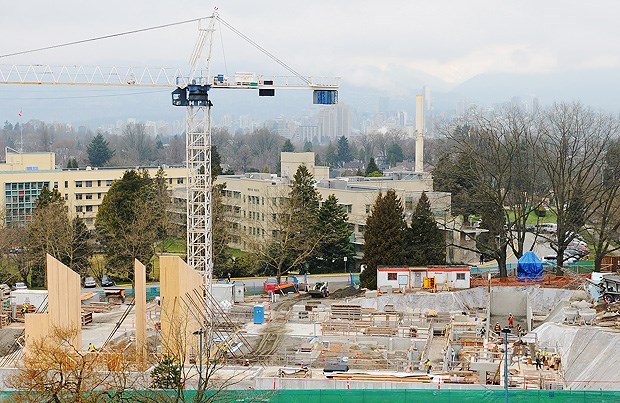Development applications in Vancouver often attract complaints about density, height, design, parking or traffic. But Richard Pass describes the rezoning process for a $31.2 million project at Heather and 31st Avenue as “smooth.”
Pass is chief executive officer of Ronald McDonald House B.C. and the project is a new Ronald McDonald House on the B.C. Children’s Hospital campus.
It’s a home-away-from-home for seriously ill children and their families when they travel to Vancouver for hospital treatment from elsewhere in B.C. or the Yukon.
The new facility will serve up to 73 families at a time — far more than the current Ronald McDonald House at 4116 Angus Dr., which houses 12.
While the non-profit’s mandate is to serve seriously ill children and their families, it’s had to focus on cancer patients and their families because of health needs and space constraints at the Angus Drive site.
“So it’s really evident that we need to serve more,” explained Pass, estimating about 20 families are turned away each month.
Families live in Ronald McDonald House while travelling back and forth to hospital for their child’s treatment.
“Sometimes, when they’re too sick, the kids stay in the hospital and it’s the family who stays here,” Pass added, noting the average stay is two to nine months, and sometimes up to two years. Families pay $12 a night if they can, but no one is turned away for lack of money.
Talks with B.C. Children’s Hospital started five years ago about the possibility of building a 90-family Ronald McDonald House.
Negotiations with the provincial government for land on hospital property ensued, as did fundraising.
The province agreed to a 60-year lease for a $1, with a negotiable renewal. The land had been used for parking stalls and greenspace.
Construction is well underway and the design, by Michael Green Architecture Inc., features four houses or pavilions interconnected by common spaces. Walls started going up on one of the houses recently. The goal is to have the occupancy permit in March of 2014, with families in the house by May 2014.
Once built, it will accommodate families who have children with any serious illness, not just families of cancer patients.
“Because we’ve got the four pavilions, we’ll be able to group people by floor or by building and really open it up to be able to serve more people. Currently, we serve about 400 families a year and in the new house we expect it’ll be over 2,500 families a year,” Pass said.
It’s designed to be home-like, rather than institutional, to make families feel comfortable.
“And because we’re on the fringe of the hospital, we wanted to make sure there was a gentle transition between [it and] the neighbourhood, so it looks residential and not a hospital look and feel,” Pass added.
During community meetings prior to the rezoning, he explained to residents the development’s purpose and quelled concerns about traffic and parking congestion by noting there will be underground parking.
The Angus Drive Ronald McDonald House is listed for sale at just under $4 million and proceeds will go towards the development.
The non-profit is currently $6 million shy of its $31.2 million fundraising goal. The current house takes $900,000 annually to run, while the operating cost of the new house is estimated at $2.1 million.
Ronald McDonald Houses are not owned or run by McDonald’s.
There are about 322 worldwide and each is locally owned and operated as an independent, not-for-profit charity, which leases the name from the corporate McDonald’s charity in Chicago. “We are the Children’s Family House Society of British Columbia that operates as a Ronald McDonald House,” Pass said.
In Canada, houses receive an annual operating grant from the McDonald’s corporate charity and, in addition to that, B.C. owner-operated McDonald’s restaurants support Ronald McDonald House B.C. with McHappy funds and coinbox donations from the community. Altogether, the money covers about 12 per cent of the B.C. house’s operating budget.
Pass, meanwhile, is optimistic the $6 million funding gap for the cost of the new facility will be bridged. And while some might think the mood at the Ronald McDonald House is sad given the nature of its purpose, he said that’s not the case.
“It isn’t. No medical treatment happens here in the house and so what really happens is everyone’s living in hope.”
Click here to see more photos.
[email protected]
twitter.com/naoibh



